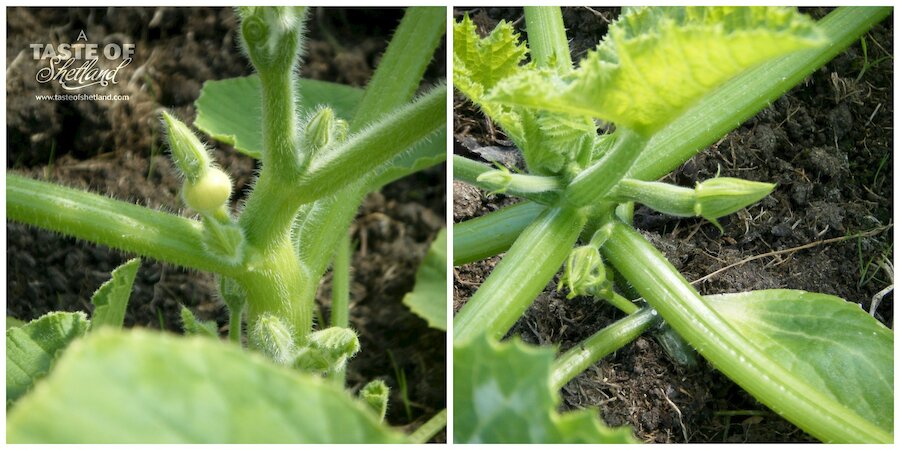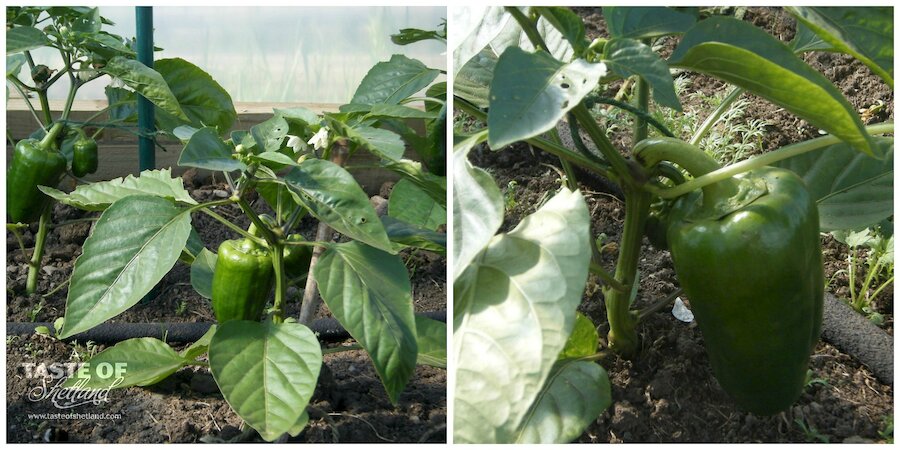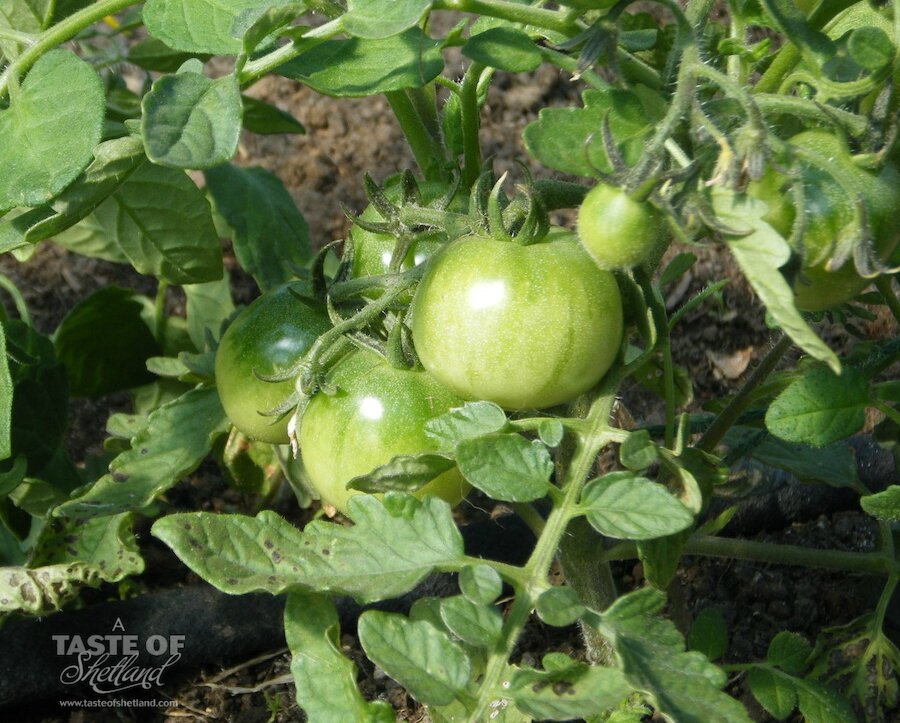Poly-tunnels, polycrubs, greenhouses, glasshouses, coldframes and cloches. Whatever you've got, or whatever you want to call them, 'undercover' opens up a whole new side of growing food in Shetland.
In England or even mainland Scotland, the expectation is to be able to grow beans, courgettes, tomatoes and sweetcorn outside. But at 60 degrees north protection is essential. Poly-tunnels help us recreate the conditions the plants need to flourish. We still have to accept our produce might not achieve the size, taste or quantity of their mainland peers, but they taste so much better than the supermarket offerings.
At the moment we have four poly-tunnels and lots of mini, movable tunnels. Big tunnel number four was constructed at the request of the Scottish Crofting Federation (SCF) as part of their summer training programme. On a sunny day in May we had nine enthusiastic participants wielding spades, pick axes, drills and screwdrivers; digging, levelling, measuring, bolting and hanging onto large quantities of plastic sheeting.
Every year for the last three years we have erected a new tunnel at the end of May. Thanks to armies of volunteers we are now becoming adept at preparing the site, erecting the tunnel, laying the beds and planting up. Our record is 10 days from weedy patch to fully planted tunnel.
We hadn't planned a new poly-tunnel this year but following the request we up-scaled our transplant growing to fill the new tunnel. It is always touch & go as to whether the tunnel will be up and usable before the delicate transplants begin to be pot bound.
The cucurbits (courgettes, pumpkins, cucumbers, marrows, melons) always get the new tunnel. They're the last undercover crop to be sown and planted out for summer harvest. All of them do best in terms of the health of the plant, and maximum productivity, if their growth from germination to fruiting is unchecked. I've frequently found myself spending hours potting up courgettes and pumpkins I think are nearing the limit in their small pots, only to then spend more hours planting them out in their final poly-tunnel home, less than a week later.
But those days make all the difference. Their roots do not become constricted and they don't go short of food. Once in their final spot (assuming we have no fearsomely cold nights) they continue growing at the same pace with no 'transplant check', rewarding us with healthy plants and early fruits. All being well we expect to be harvesting courgettes about four weeks after planting out.
Timing of potting up is crucial with most plants. We potted on our aubergines and peppers too this year, but not the chillies. We ran out of big pots. The chillies are hardier than the peppers and aubergines and we hoped they wouldn't suffer too much. Now they're all planted up the difference is obvious. The plants that had comfy roots and good nutrient levels are fruiting but the chillies have been slow to cope with planting out. They look sad and are barely flowering.
Their foliage turned pale and they struggled to take up water early on, wilting on the few sunny days in May. We do have chillies though, on two plants we decided to grow on in big pots so we can take them into the house for the winter. If we are careful we can keep them growing through the cold and dark days at the end of the year to produce early fruit in the spring.
The cucurbits have sailed through, although they don't particularly like this cooler grey weather we're having at the moment. Lucky with our timing, they waited no time at all before going into the soil. Once the tunnel was up, our WWOOFers created the beds, increasing the soil depth in the tunnel by covering existing grass with paper and layering seaweed, manure and loam to make a level planting area. Courgettes, pumpkins and the like, are heavy feeders and they enjoy the high level of nutrients added to the soil by the seaweed and manure.
Pumpkins are a particularly resource and space intensive crop if you have to grow them in a poly-tunnel. Both pumpkins and sweetcorn give a small return for the amount of effort we put into growing them. In Shetland we can only hope for one big pumpkin and one sweetcorn cob per plant. But they can be grown and we won't be defeated by our exasperating climate. They have a certain 'wow' factor for our veg box customers too.
To get the most out of the poly-tunnel space we base our pumpkin and sweetcorn growing on the native north American method of the 'trinity' or 'three sisters'. Pumpkins, sweetcorn and beans all planted in the same area of ground.
The pumpkins are shallow rooted and the sweetcorn deep; the beans fix nitrogen from the air and feed both. The sweetcorn grow tall; the pumpkins low and along the ground. Beans climb up everything and use the sweetcorn as a support.
In this system all plants are left to mature until everything is ripe and dry, but in our case we want to harvest both the sweetcorn and beans while they are still young. So we just grow pumpkins and sweetcorn together and give the beans a separate tunnel all to themselves.
Thanks to the SCF training request we now have so much more undercover growing space. More of our customers will be able to get a taste of sweetcorn, tomatoes, aubergines, peppers and chillies grown with far less food miles than those in the supermarket. It will help us extend the season, particularly with salad at the end of the year. Even though we hadn't planned to put up another tunnel, we are glad we did and we're already dreaming about what else we could grow, if only we had another one.....







